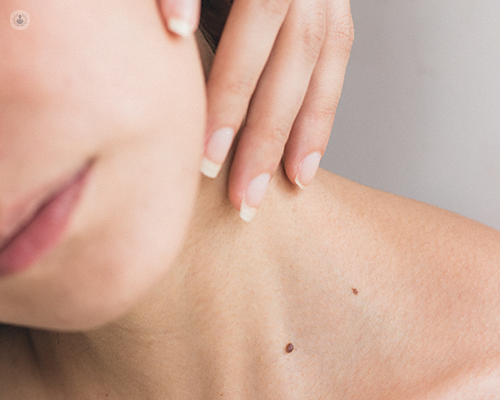A closer look at head and neck lumps
Autore:Head and neck lumps can be a significant concern. Understanding the nature of these lumps, their causes, diagnostic processes, and treatment options is crucial for effective management.
Here, Mr Spencer Hodges, renowned consultant oral and maxillofacial surgeon, offers an expert insight into head and neck lumps.

What causes head and neck lumps?
Head and neck lumps can arise from a variety of causes, including:
- Infections: Infections, particularly in the lymph nodes, are a common cause of head and neck lumps. Conditions such as the common cold, strep throat, or mononucleosis can lead to swollen lymph nodes.
- Cysts: Benign cysts, such as sebaceous cysts, can develop in the head and neck region. These are typically filled with fluid or semi-solid material.
- Salivary gland disorders: Conditions affecting the salivary glands, such as sialadenitis (infection) or benign tumours, can cause lumps.
- Lymphoma: Lymphoma is a cancer that affects the lymphatic system and can present as lumps in the lymph nodes of the neck.
Are all head and neck lumps benign?
Not all head and neck lumps are benign. While many lumps are caused by benign conditions, some can be malignant and require prompt medical attention. Factors that may increase suspicion of malignancy include: rapid growth of the lump; hard or immovable lumps; and the presence of associated symptoms such as unexplained weight loss, difficulty swallowing, or voice changes.
How are head and neck lumps diagnosed?
Typically, diagnosis of head and neck lumps involves:
A clinical evaluation:
- A specialist, such as an oral and maxillofacial surgeon, will begin with a thorough medical history and physical examination of the lump. The surgeon will assess the size, shape, consistency, and location of the lump, as well as check for associated symptoms.
Specific diagnostic tests:
- Imaging studies: Imaging techniques such as ultrasound, CT scans, MRI scans, and PET scans provide detailed views of the lump and surrounding structures.
- Fine needle aspiration: A fine needle aspiration is a test by which a thin needle is used to extract cells from the lump for microscopic examination. This helps in distinguishing between benign and malignant cells.
- Core needle biopsy: A core needle biopsy is a test by which a larger needle is used to obtain a core of tissue from the lump for more detailed analysis.
- Blood tests: Blood tests may be conducted to assess overall health and detect markers associated with specific conditions, such as thyroid function tests.
What treatment options are available for head and neck lumps?
The treatment of head and neck lumps depends on the underlying cause. Treatment options can range from observation and medication to surgical intervention:
- Observation: Small, asymptomatic benign lumps may simply be monitored over time to ensure they don’t grow in size or cause symptoms.
- Medications: Antibiotics or antiviral medications may be used to treat infections that cause swollen lymph nodes.
- Surgery: Benign lumps such as lipomas or non-cancerous cysts can be surgically removed if they cause symptoms or for cosmetic reasons. Likewise, surgical removal of the tumour is often the first step in treating malignant head and neck lumps. This may involve removing part or all of the affected tissue or organ.
- Radiation therapy: High-energy radiation targets and destroys cancer cells. Radiation therapy can be employed as a standalone treatment or in conjunction with surgery and chemotherapy.
- Chemotherapy: Drugs specifically designed to destroy cancer cells. Chemotherapy may be used before surgery to shrink tumours or after surgery to eliminate remaining cancer cells.
Will there be any visible scarring post-treatment if I undergo surgery for head and neck lumps?
The presence and extent of scarring after surgery for head and neck lumps depend on several factors, including the size and location of the lump, the type of surgical procedure, and the patient's healing process.
Oral and maxillofacial surgeons take several considerations into account to minimise scarring. Whenever possible, we use minimally invasive techniques that result in smaller incisions and less noticeable scars. We also strategically place incisions in natural skin folds or in less visible areas to further reduce scar visibility.
Proper wound care and adherence to post-surgical instructions are crucial in significantly reducing scarring, with techniques such as silicone gel sheets or scar massage often recommended to improve the appearance of scars. Additionally, in cases where large tumours are removed, facial reconstructive surgery may be necessary to restore function and appearance, helping also to minimise visible scarring.
To schedule an appointment with Mr Spencer Hodges, head on over to his Top Doctors profile today.


